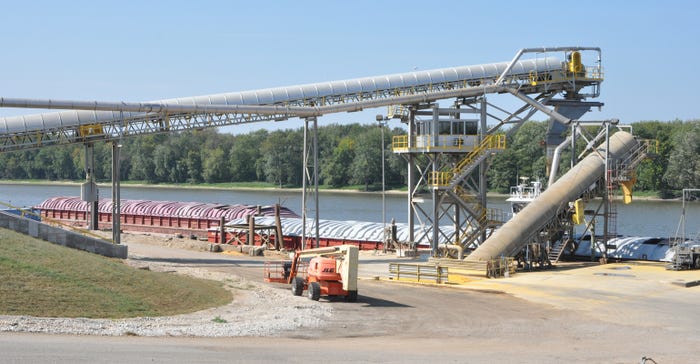
Location. Location. Location. That’s what sets Marquis Energy apart from its competitors, says Thom Rossmanith, director of coproduct marketing. Tucked right next to cornfields and the Illinois River bottoms, family-owned Marquis Energy produces 1 million gallons of fuel-grade ethanol per day, making it the largest dry-mill facility in the United States. It’s one of 13 ethanol plants in Illinois, compared with 99 plants throughout Iowa.
Ethanol plants in Illinois are few and far between, but Illinois has the third-largest ethanol production capacity in the nation at 1.6 billion to 1.7 billion gallons every year, explains Dave Loos, market development director with IL Corn.
“We have a very healthy ethanol industry here in Illinois,” he says. “We have some of the oldest ethanol plants in the country, and we have some of the newest companies.”
Illinois has an ideal infrastructure, including railroads, river systems and highways, to transport grain to plants and ethanol and dried distillers grains to market.
“That puts us in a very critical position, with significant advantage over other plants and other locations,” Loos explains.
 RIGHT ON THE RIVER: Marquis Energy is located on the Illinois River, allowing the company to efficiently and cost-effectively ship both ethanol and DDGs by barge. Ethanol travels through underground pipes, and trucks haul DDGs a half-mile down the road, where it’s loaded onto barges.
RIGHT ON THE RIVER: Marquis Energy is located on the Illinois River, allowing the company to efficiently and cost-effectively ship both ethanol and DDGs by barge. Ethanol travels through underground pipes, and trucks haul DDGs a half-mile down the road, where it’s loaded onto barges.

States like Iowa needed ethanol plants to help boost local corn markets.
“Illinois already had a strong basis when the ethanol industry took off in 2003 and 2004,” he adds. “We have access to the export market that other states don’t have.”
Loos anticipates continued export market growth with countries like China, Japan and Mexico. The Mexican Energy Regulatory Commission recently announced an increase in the maximum amount of ethanol that can be blended in the Mexican gas supply, which could equal another 1.2 billion gallons of ethanol each year.
From Illinois to the world
The Marquis Hennepin facility uses one-sixth of the 600 million bushels of corn produced in the 18 surrounding counties each year. With direct access to the Illinois River, Interstate 80 and Class 1 railroads, Rossmanith says Marquis Energy ships ethanol, corn oil and DDGs around the world without going through typical elevator channels, and represents 18% of the New Orleans export market.
Rossmanith highlighted the company’s shipping capabilities to international grain buyers during the 2017 Illinois Department of Agriculture Grain Tour. Marquis Energy recently shipped 9,000 tons of DDGs from Hennepin directly to Colombia, which appealed to Latin American representatives dealing with poor-quality DDGs at their respective companies. “We can IP [identity preserve] an entire vessel from one plant,” Rossmanith notes. “We’re the only one that can do that.”
 TRUCK TRAFFIC: More than 450 trucks come into the facility every day, delivering more than 120 million bushels of corn every year.
TRUCK TRAFFIC: More than 450 trucks come into the facility every day, delivering more than 120 million bushels of corn every year.

Other DDGs providers may ship materials blended at the elevator, at the production facility and again in New Orleans. The color of the DDGs is another feature that sets Marquis Energy apart, Rossmanith adds.
A golden opportunity
Marquis Energy’s gold-colored DDGs are considered a premium product. How do the DDGs stay golden? It’s all about the dryers. Most ethanol plants use one to two high-temperature dryers and dry wet products at 700 to 1,000 degrees F, Rossmanith explains. Marquis Energy uses six dryers at lower temperatures, around 221 degrees F.
“We dry at lower temperatures for a longer time,” he explains. “It doesn’t burn or start to change color.” Steam tubes heat the Marquis Energy dryers instead of flames. “We’re one of only three plants in the country to use steam to dry the products,” Rossmanith adds.
The temperatures and pressures inside the dryers are monitored constantly, and samples are taken for quality assurance, notes Jeff Peterson, president and director of risk management. “Every product coming in and going out of here must meet certain specs,” he says. Samples are also sent to third parties to verify quality.
What if buyers aren’t happy with the product quality? “We want to be the showcase for the ethanol industry,” Peterson says. “I want to have all the problems stop at my desk.”
About the Author(s)
You May Also Like




